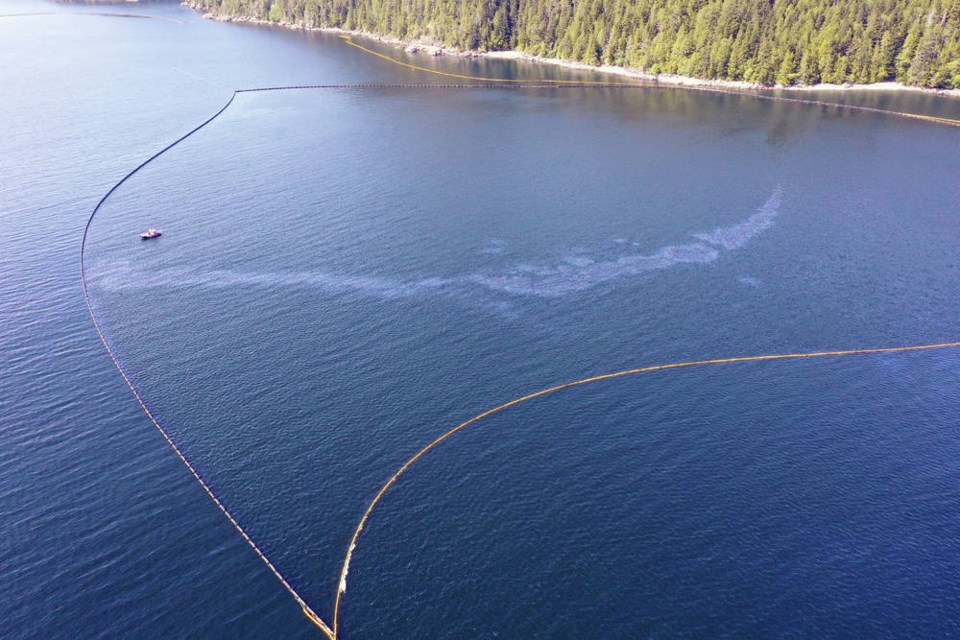The federal government has signed an emergency contract worth $5.7 million to pump bunker oil and mixed fuels from a sunken wreck in Nootka Sound.
The 483-foot MV Schiedyk cargo ship went down on Jan. 3, 1968 after striking a submerged ledge off Bligh Island, and rests about 350 feet below the surface. It has been leaking fuel and fouling areas of the Zuciarte Channel since last fall.
Florida-based Resolve Marine Group, which has worked on multiple wrecks and cleanups — including the 2010 Deepwater Horizon spill in the Gulf of Mexico — was called in earlier this year to assess the MV Schiedyk and will now start pumping out its fuel tanks.
Resolve Marine will use a technique called hot tapping to reduce the volume of fuel in the tanks.
The company plans to drill a hole in the fuel tank from the outside, attach a drainage valve and then pump the fuel out of the tank through a hose attached to the valve.
The assessment of the MV Schiedyk found two tanks containing heavy fuel oil — one with marine diesel oil and the other containing mixed oil products.
The amount of fuel is estimated to be about 147 cubic metres, based on the total volume of the tanks, but that amount may be less if the internal tank walls have been compressed, according to government officials.
In a statement, the federal government said the hot-tap method has been used successfully on shipwrecks for many years, including in the Manolis L in Atlantic Canada in 2018.
There is, however, a “small risk” of a larger release of oil.
Canadian Coast Guard environmental response crews are prepared to address any sudden surge of fuel.
Work is scheduled to begin in mid-June and is expected to take several weeks.
Government officials said recent results of a technical assessment determined that immediate action to remove bulk fuel is necessary to protect Nootka Sound, an area rich in natural beauty and in the traditional territory of the Mowachaht/Muchalaht First Nation.
Since last fall, the coast guard, the province’s Environment Ministry and the Mowachaht/Muchalaht First Nation have been jointly leading a virtual command post to manage fuel on the water and protect the surrounding beaches and marine mammals using thousands of metres of absorbent booms.
About 40,000 kilograms of oil-soaked driftwood, plant debris and booms have been recovered since the start of the response operation.
The MV Schiedyk was built in Ireland in 1948 and was leaving Gold River and headed to Portland, Oregon carrying about 100 tonnes of barley and wood pulp when it sank. It likely had full fuel tanks as it headed out to sea and struck the submerged ledge on the south side of Bligh Island, before drifting down Zuciarte Channel and sinking on the east side of Bligh Island.
Records indicate all 34 crew members abandoned ship.
Resolve Marine Group will be supported by Canadian subcontractors, including the Canadian-registered Atlantic Condor vessel, which will act as the operations platform.



